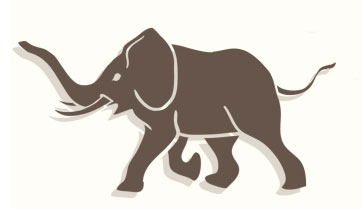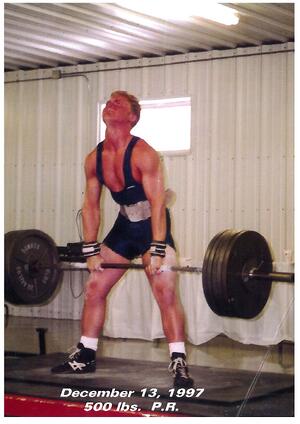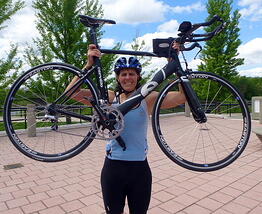 Wearable fitness technology is definitely the latest thing in the health, fitness, and wellness industry. With several recent studies focusing on the negative effects of sitting and a sedentary lifestyle, it seems as if these wearable fitness gadgets are getting even more hype than ever. These gadgets can track the number of calories you burn, how many steps you take, every single move you make, and even the quality of sleep you get each night. Are these super-fit tech toys really the key to getting fit? Or is it best to stick to the advice of a trusted health and fitness professional?
Wearable fitness technology is definitely the latest thing in the health, fitness, and wellness industry. With several recent studies focusing on the negative effects of sitting and a sedentary lifestyle, it seems as if these wearable fitness gadgets are getting even more hype than ever. These gadgets can track the number of calories you burn, how many steps you take, every single move you make, and even the quality of sleep you get each night. Are these super-fit tech toys really the key to getting fit? Or is it best to stick to the advice of a trusted health and fitness professional?
While it’s always best to work with a certified health and fitness professional and your doctor when making changes to your activity level, wearing fitness tech gadgets definitely has a lot of benefits. Because I LOVE to be in the know with just about anything on trends, I had to get a fitness tracker of my own to see for myself. Here is what I learned.
1. Users become aware of their ACTUAL current activity level.
These fitness trackers give users a great picture of where they are with their current activity level. I will admit that when I started to wear mine, I was pretty shocked to find out that even though I exercise or try to move my body in some way every day, there are days where I still struggle to reach the recommended 10,000 steps per day.
2. Goal setting is key.
While I was surprised to learn that I needed to step up my game (literally) in the number of steps per day I was taking, my fitness tracker made it easy for me to set realistic goals and track my progress. I know what my numerical goals are, and it’s easy for me to check my progress throughout the day.
3. Getting in an hour workout isn’t enough.
Okay, so I’m not advocating over-exercising here, but I am promoting getting up and moving around throughout the day. It can be so easy to get sucked into e-mail, a project at work, or whatever else you have going on in your day. When we get sucked into these projects, hours can go by without us taking a single step.
After using my fitness tracker to assess where my daily movement was and setting some personal goals, I know that I need to take movement breaks each hour in order to reach my goal. Not only are these movement breaks necessary to achieve 10,000 steps a day, but I have found that I’m more productive in the 50 to 60 minutes that I spend working on a task, and I am more focused after I come back from my movement break.
4. Community helps keep users accountable.
While this may not appeal to everyone, with many of the fitness trackers there is a community element involved. You can share your successes through social media and you can follow along with other people using the devices. Personally, I like to keep my information private, but I think this aspect can be great for some people!
5. Fitness trackers provide extra motivation.
Constant sight of the wristband is like a constant reminder of the goals that you set for yourself. For me, it’s motivating when I see the wristband and a reminder to follow through with the commitment that I made to myself.
While there are so many benefits to using these wearable fitness trackers, there are a couple of things to remember before you rush out to the store to purchase a tracker for yourself.
- These trackers are not exact. While companies have done their best to ensure accuracy, nothing is perfect and you have to keep that in mind and leave a little room for error.
- It’s also important to remember that simply wearing the device will not make you fitter or healthier. You must act on the goals that you set in order to see changes.
- It’s also important to remember not to let the numbers take control of your life. If you find you are putting your fitness and workouts before your personal relationships or you are getting injuries from your workouts, you may want to step back a bit. It’s important to listen to your body and do what is truly making you happy.
I have loved wearing my fitness tracker, as it has helped me to gain activity throughout my day, which was my main goal. While I meet the required amount of exercise each day, I still do quite a bit of sitting, which is now being called the new smoking. Reaching my goal each day makes me feel good and motivates me to continue to work hard to stay healthy while enjoying life.
Be Active Stay Healthy!
This blog was written by Tara Deal Rochford, contributing writer, group fitness instructor, and author of healthy living blog Treble in the Kitchen. Meet our other NIFS bloggers.


 Along the way, I have learned that fitness and wellness can seem quite complicated. Various mentors, self-described gurus, professors, doctors, and muscle magazines have provided us all with enough quick fixes, miracle workouts, and “sound” advice to help us become the person we want to become (and also fill an encyclopedia). Probably the best advice anyone has given me would be the old saying, “Find something you love to do, do it, and do it well.” If you do not love any form of fitness, whether it is ice hockey or
Along the way, I have learned that fitness and wellness can seem quite complicated. Various mentors, self-described gurus, professors, doctors, and muscle magazines have provided us all with enough quick fixes, miracle workouts, and “sound” advice to help us become the person we want to become (and also fill an encyclopedia). Probably the best advice anyone has given me would be the old saying, “Find something you love to do, do it, and do it well.” If you do not love any form of fitness, whether it is ice hockey or 
 Everyone is demanding you give 100 percent effort on this exercise program or that workout plan. We say (or you hear), “You need to give 110 percent to achieve results. Or even better, “You’re nothing if you don’t give me your all.”
Everyone is demanding you give 100 percent effort on this exercise program or that workout plan. We say (or you hear), “You need to give 110 percent to achieve results. Or even better, “You’re nothing if you don’t give me your all.” Three blind men, who had been blind for life and who had never experienced an elephant, were brought into an area where an elephant was standing. They were placed within arm’s reach of the animal and were allowed to explore the elephant by just touching what was within their reach. They were not allowed to step closer or move side to side.
Three blind men, who had been blind for life and who had never experienced an elephant, were brought into an area where an elephant was standing. They were placed within arm’s reach of the animal and were allowed to explore the elephant by just touching what was within their reach. They were not allowed to step closer or move side to side.
 just as many expectations to live up to. You guessed it, that’s me on top of that pyramid crying my eyes out about something I don’t remember—I’m sure one of my older brothers had recently given me “something to cry about” (a phrase we heard a lot).
just as many expectations to live up to. You guessed it, that’s me on top of that pyramid crying my eyes out about something I don’t remember—I’m sure one of my older brothers had recently given me “something to cry about” (a phrase we heard a lot).
 Do you ever think about who you once were and how it compares to who you are now? What is different? Do you like the differences between the two? While you contemplate, think about how you became who you are today: the process, the trials, the ups and the downs, the victories and the losses, and maybe most importantly the way you now process thoughts and behavioral triggers.
Do you ever think about who you once were and how it compares to who you are now? What is different? Do you like the differences between the two? While you contemplate, think about how you became who you are today: the process, the trials, the ups and the downs, the victories and the losses, and maybe most importantly the way you now process thoughts and behavioral triggers. workouts, and amazing attitudes. These characteristics fit right into the formula for success.
workouts, and amazing attitudes. These characteristics fit right into the formula for success. fun!
fun! a hefty task. If this is your first time training for a half marathon, and the thought of running 10-plus miles seems a bit daunting, you are not alone.
a hefty task. If this is your first time training for a half marathon, and the thought of running 10-plus miles seems a bit daunting, you are not alone. Sometimes when I am running by myself, a little voice inside my head starts to doubt that I can finish the long run I set out to complete. When I bring a friend along with me, she encourages me the entire way…even if she doesn't know it! Sometimes, just knowing someone else is running with me really helps me push through.
Sometimes when I am running by myself, a little voice inside my head starts to doubt that I can finish the long run I set out to complete. When I bring a friend along with me, she encourages me the entire way…even if she doesn't know it! Sometimes, just knowing someone else is running with me really helps me push through.
